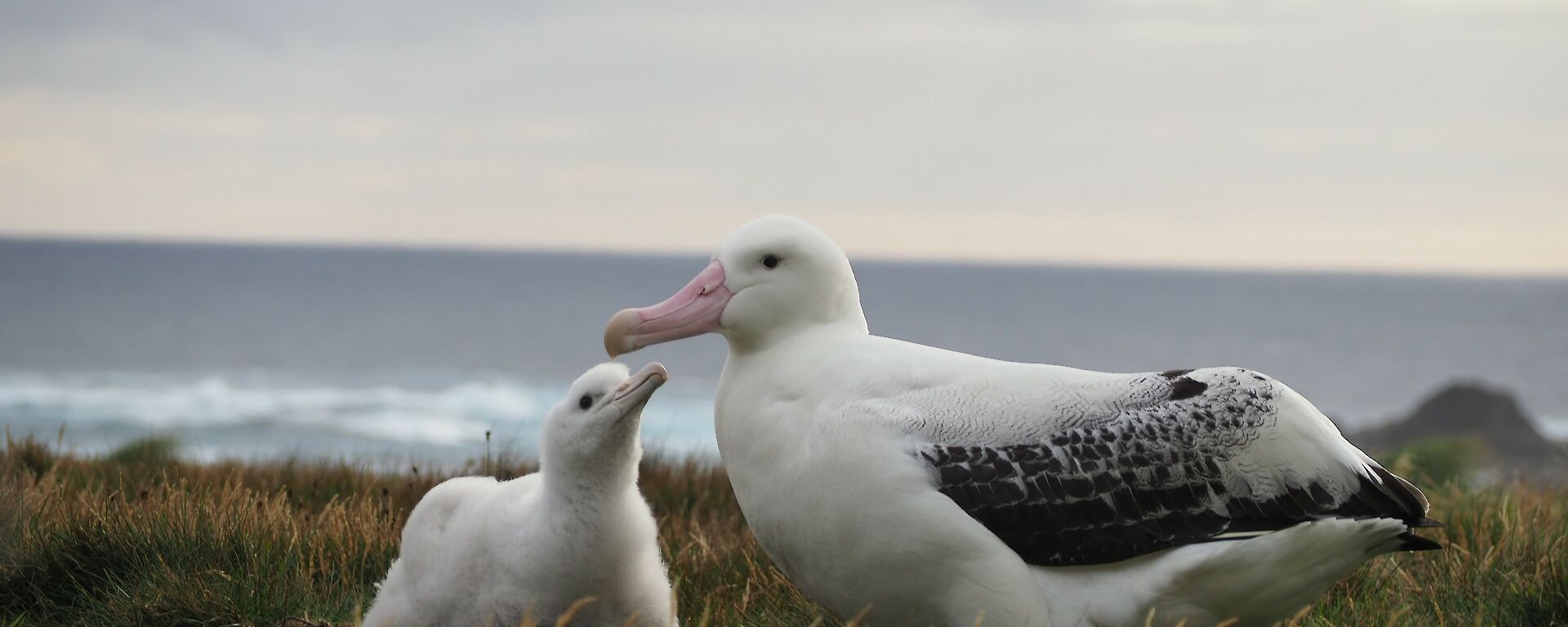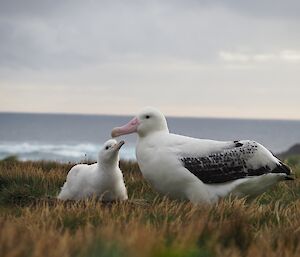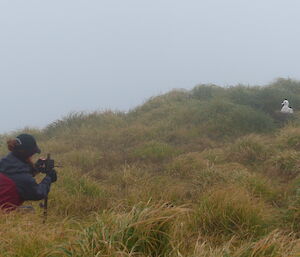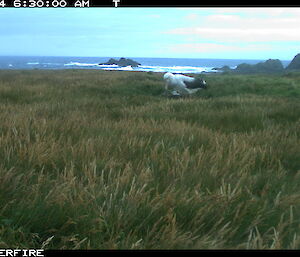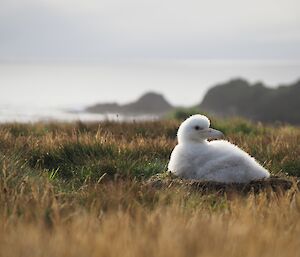One of the many highlights of my job here on Macquarie is working on the wandering albatross monitoring program. I was fortunate to arrive during a very exciting time in the lives of the wandering albatross, right when their chicks were due to hatch. The parents take shifts sitting on their eggs for around 78 days, before the egg hatches. This meant that my first trip to many of the nests was the first time that they’d been monitored since their chicks hatched, so I was one of the first people to get to meet the next generation of these magnificent birds.
During the nest-building stage of the breeding cycle last summer, the rangers here installed a trail camera at each nest. The cameras are set to take a photo of the nest once an hour during daylight hours, in order to keep track of the progress of the nest. I’ll get to monitor each nest once a month, all year, to collect data from the trailcams, and keep track of how the chicks are doing as they turn from piles of fluff into monumental adult wanderers.
The main colony of wandering albatross nests is about a 40km walk from the main station on Macquarie, down to the rugged south-west corner of the island. The wanderers will choose nest sites that are exposed to the strong westerly winds which are so typical of Macca, as they need these winds to get themselves to and from their nests. This means that monitoring them involves walking the length of the island and working out of a remote field hut on the southern coast.
This season, 10 pairs of wandering albatross built themselves nests over the summer. This is the highest number of wanderer nests on Macquarie in over a decade, a welcome contrast to last year’s low of three nests.
On my nest monitoring trip in April, I found that of this year’s 10 nests, six have successfully hatched a chick. Two of the sets of parents of these nests are first-time breeders.
One nest this season is on the northern west coast of the island, in a location that hasn’t been used for nesting by wandering albatross since 1967. This section of coast is known as the ‘featherbed’ due to the bog that characterises the coastal escarpment. It’s very exciting to see the birds re-colonising this area, and to hope that the presence of this nest may encourage more birds to use this area in the coming years. I was fortunate to be paying this nest a visit last month when the dad flew in to feed his chick. This chick hatched around the first week of March, so it’s now two months old. It has been left alone since early April, with both mum and dad only returning every few days to give the chick a feed. I lay in the grass and watched as the dad towered over the chick and poured chunks of regurgitated squid and fish into its open beak. It’s an incredible experience to be able to get to know these majestic birds so close-up.
Keeping track of the success of wandering albatross nests is a crucial part of the work that Tasmania Park and Wildlife Service Rangers do here on Macquarie. These birds choose this tiny sliver of green spongy land to breed on, but most of their lives are spent in the vast southern ocean. By keeping track of their population here on land, we can learn more about their survival rates out at sea, and how they are responding to a changing environment.
Sare Larcombe, Wildlife Ranger, Tasmania Parks and Wildlife Service

